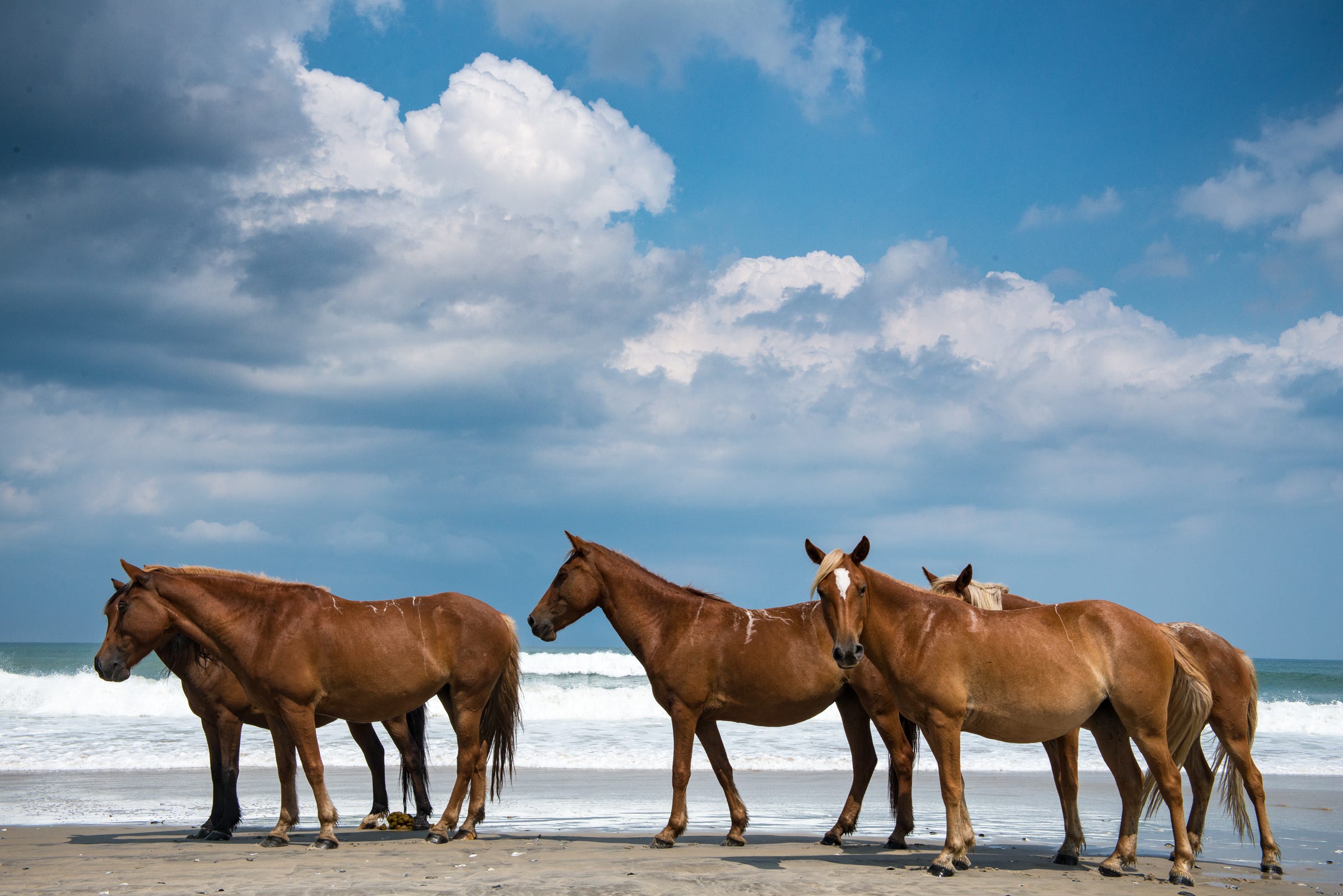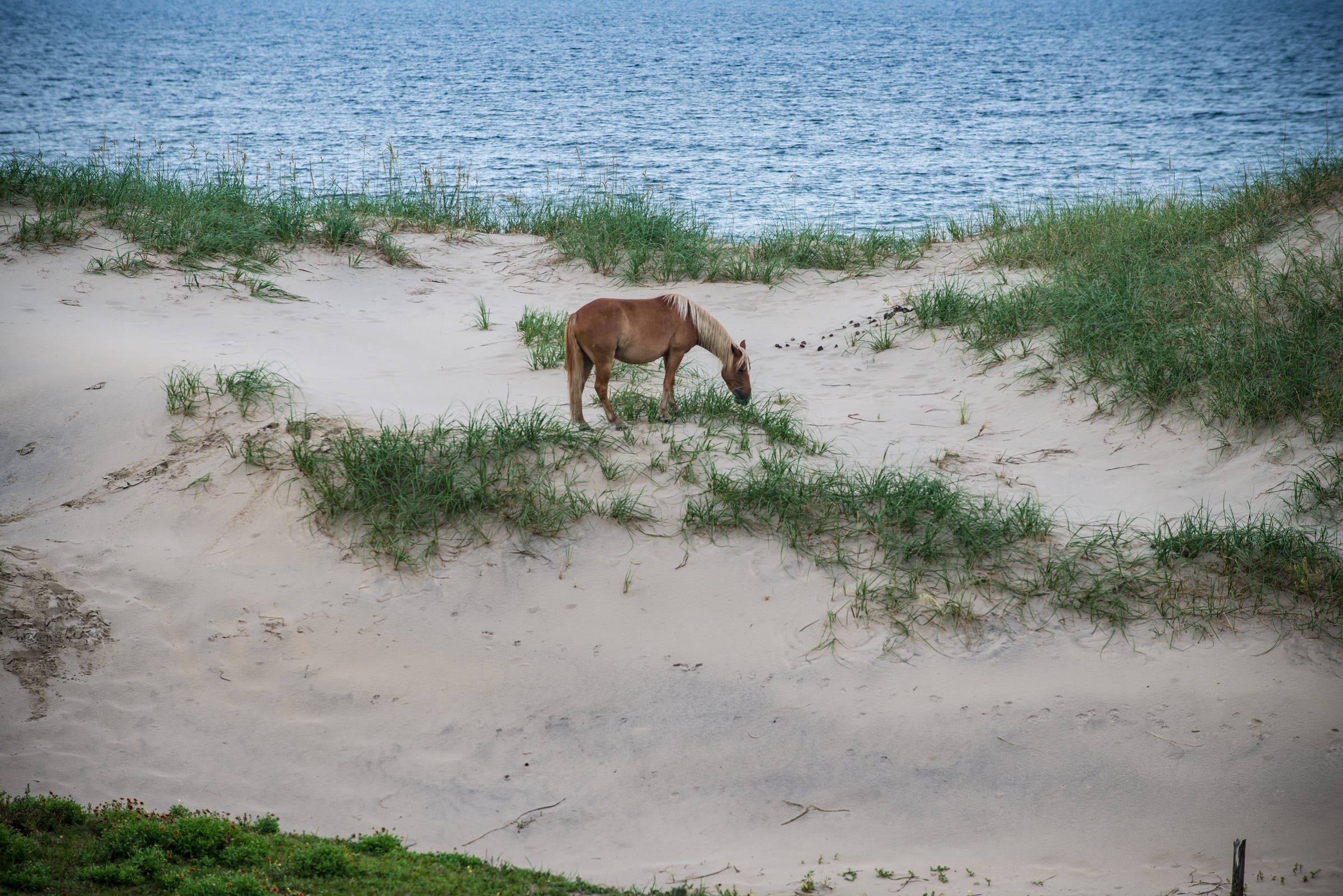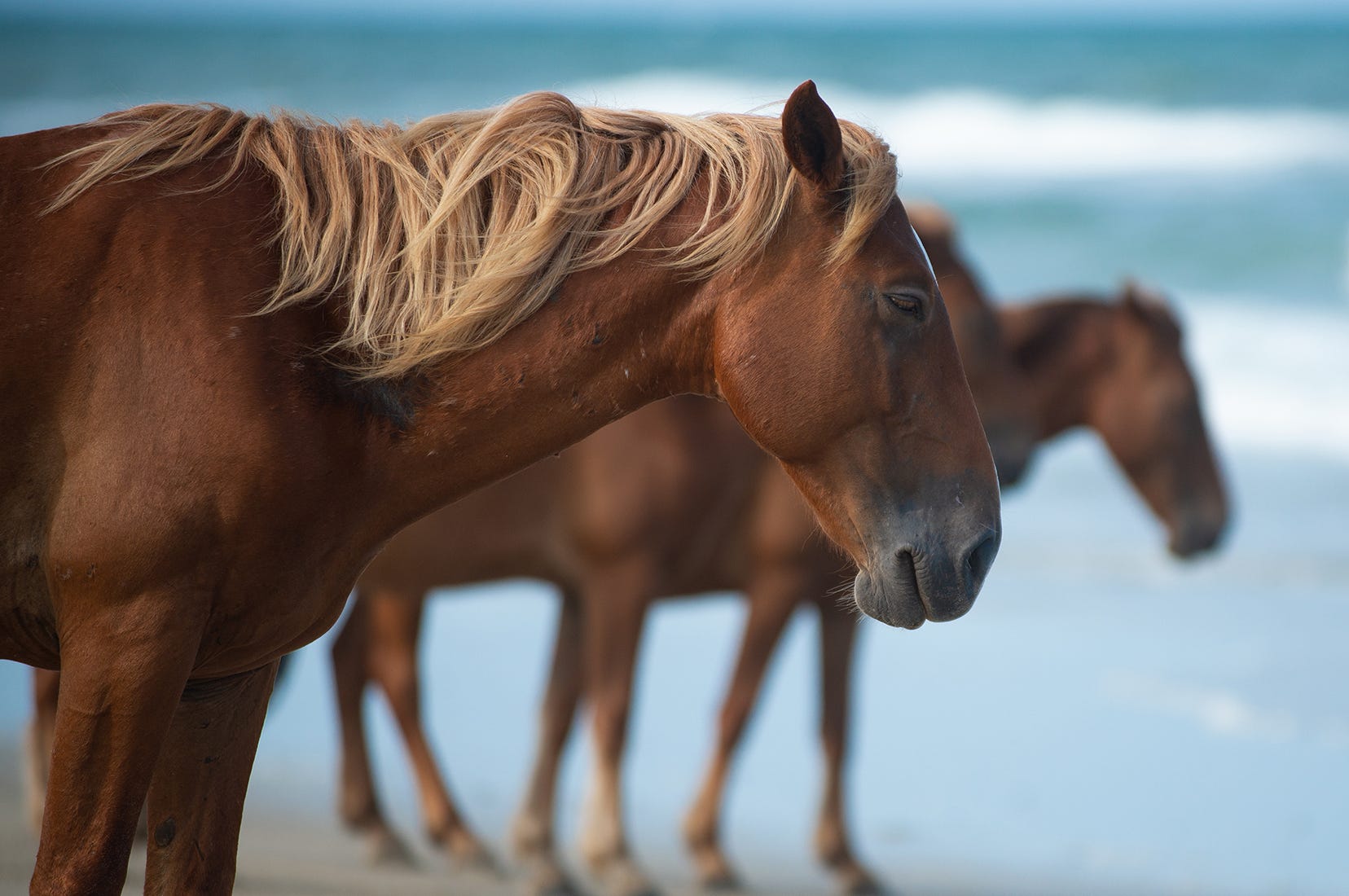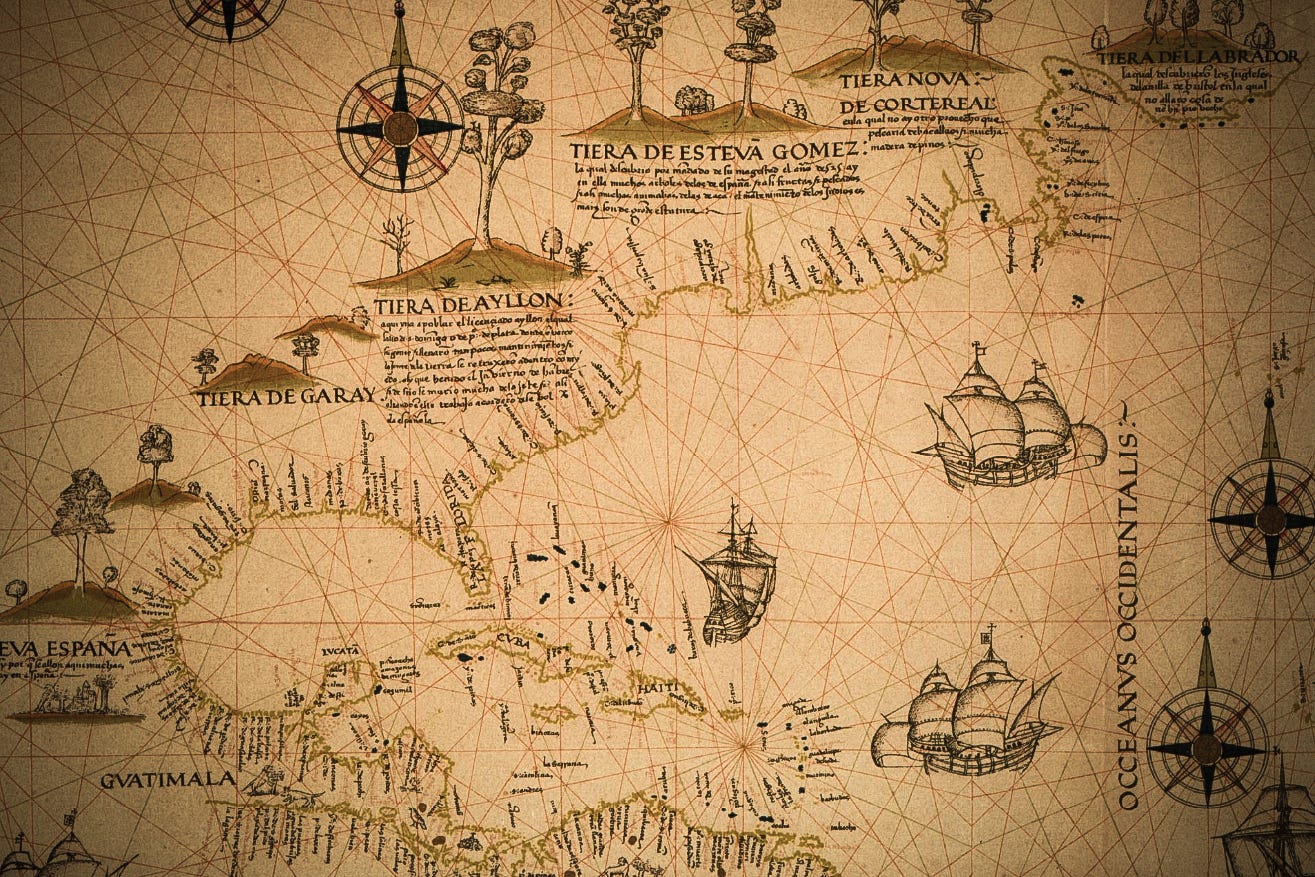The legend of the wild horses of Corolla
There are many tales of how they got there, including one involving the establishment of a Spanish Dominican settlement.
The wild horses that haunt the drifting sands of North Carolina’s Outer Banks are ghosts of an age gone by.
Their presence there is veiled in mystery, as the story of their origins perished with the captains and ships that once transported them.
Saddled with the name “Banker Horse,” a name taken from the bluff of land they grace, they roam free, possessing the gentle and abiding spirit of their forebears from some 500 years ago.
While the history of their landing may be an enigma, their ancestry is anything but. With bloodlines tracing back to the Iberian Peninsula with hints of an Arabian lineage, they are, beyond a doubt, descendants of the iconic Spanish Mustang. Fittingly so, as the name “Mustang,” loosely translated, means “ownerless beast.”
It is thought that the first horses to descend on the Western hemisphere, after 10,000 years of extinction, were brought by Christopher Columbus on his second voyage to the New World to the isle of Hispaniola (Little Spain).
The New World settlers, in their advance further into unexplored lands, treasured the steed as an invaluable asset in their pursuit of the dominions and riches they dreamed of.
The legends
There are at least three prominent tales of how the horses made landfall on the Outer Banks. They are derived from scant historical records but have endured over 500 years of scrutiny.
Sir Richard Grenville and the Lost Colony
Sir Richard was one of the earliest English captains to lead an attempt to establish a permanent settlement on the continent. In 1585 he commanded a fleet of seven ships carrying over 500 colonists destined for Roanoke Island in the Outer Banks. This would be the first of two unsuccessful attempts to settle this location. The expedition fell under the auspices of a charter held by Sir Walter Raleigh, who, among other things, is credited with introducing tobacco to the United Kingdom.
On April 9, 1585, the flagship Tyger in concert with the Elizabeth I, Dorothy, Red Lion, Roebuck, and two pinnaces, put to sea.
The harrowing voyage went through the Bay of Biscay to Mosquetal on the south shore of San Juan Bautista (modern-day Puerto Rico). Under sail for only a few days, they were ravaged by a storm off the coast of Portugal, separating the Tyger, and claiming a pinnace.
The Elizabeth and Tyger eventually rendezvoused and forged their way northward, meeting the Roebuck, Red Lion, and Dorothy only when they neared the Outer Banks.
Ships logs indicate that the fleet made landfall in Hispaniola, where they traded with the Spanish, which is possibly where they may have picked up several mustangs and livestock.
Their arrival near Roanoke Island was as dramatic as their departure from England. The Tyger struck a shoal as she made her approach and was nearly wrecked, losing all of her precious cargo and supplies — an arrival not unlike that of Vázquez de Ayllón.
Despite the colonists’ best efforts, the first attempt to create a permanent settlement was doomed.
Speculation that this could have been the source of the Corolla horses is rooted in the Lost Colony location, which is only a few miles from Corolla. It would be likely that the settlers left the horses behind when they abandoned the colony.
The graveyard of the Atlantic
The Gulf Stream is a warm, swift current in the Atlantic Ocean that originates near the Gulf of Mexico. Its northward flow passes Cape Hatteras before turning eastward toward Europe.
The discovery of this 5-knot current allowed ships a quick return to Europe.
But for all its benefits, the route was not without its terrors. Beneath the shimmering seas, the eternally shifting sandbars off the Outer Banks claimed the lives of countless sailors and their ships laden with treasures from the New World.
The foundering ships frantically cast cargo overboard in attempts to survive; this would have included any livestock they may have been transporting. Horses released overboard could have swum to the barrier islands.
The common challenge to this theory lies in the doubt that ships bound for Europe would have any need or desire to carry livestock. Below deck space was at a premium. Large animals were notoriously tricky to ship, and Europe was in no need of horses.
Lucas Vázquez de Ayllón and his hundred horses
Lucas Vázquez de Ayllón bet it all and lost everything … including his life.
Vázquez de Ayllón was an explorer, political figure, and plantation owner on Hispaniola with close ties to King Charles V of Spain. He backed two explorations of the continent in search of the “Northwest Passage” and became enamored by the tales of strange lands and peoples brought back by his Captain, Francisco Gordilla.
He secured a charter from the Crown in 1523, granting him rights to settle the lands along the eastern seaboard. Investing all of his considerable wealth and mortgaging his plantation, he organized the voyage that he would personally lead.
By 1526 he gathered a fleet of five vessels, over 650 men and women, and vast supplies to sustain the new settlement — including 100 horses. The reasoning? To have a herd that would “reproduce and sustain itself …”
Among the colonists were two Dominican Friars, Fr. Antonio de Montesinos O.P. and Fr. Antonio de Servates O.P. They were to establish a church and monastery in the new settlement. Fr. de Montesinos was a champion for the rights of indigenous peoples, and is considered a forefather of those who proclaim the dignity of all human life.
And on a hot mid-July day in Puerto Plata, (Venerable) Fr. Bartolomé de las Casas blessed the fleet before their departure.
The flagship Capitana, La Chorruca, El Breton, Santa Catalina, and La Trinadad set sail for points north.
The flagship Capitana was wrecked on her approach to the barrier islands, losing all of her precious cargo.
After weeks of searching for a suitable location, they established the short-lived San Miguel de Gualdape Colony. The name derived from the Guale tribe who lived there, and St. Michael the Archangel. whose feast took place on the day they settled.
With a shortage of supplies, unusually cold weather and strained relations with the tribe, the settlement did not survive long.
Vázquez de Ayllón died in the arms of Fr. Montesino in October 1526 of an unknown illness, sealing the fate of the colony.
Only 150 of the 650 colonists would make it back to Hispaniola alive.
And Vázquez de Ayllón’s body was lost at sea as the ship by which it was being transported was lost to the waves.
The theory holds that the horses remained … a herd enough to “reproduce and sustain itself.”
The legacy
While they roam the Outer Banks to this day, the mystery of the horses’ arrival lingers on. They are a living testament to the Age of Discovery, a time when the European imagination was seized with dreams of distant lands and untold treasure.
While debates rage on as to the first permanent settlement, maybe that debate isn’t looking in the right direction. Maybe the answer gallops on the shores of the Outer Banks.
Perhaps it was not men, but their stalwart companion, the humble horse, that established the first permanent settlement in the New World.
Those with four-wheel drive vehicles can catch a glimpse of the regal Bankers on Corolla Beach in the Outer Banks. For those without, there are many tour operators who will bring you to the best viewing spots and give you a little history lesson to boot.
For more information, go to Visit Currituck.










Words and pictures by Jeffrey Bruno except where noted.
Originally published on Aleteia.org - Reprinted with permission.





